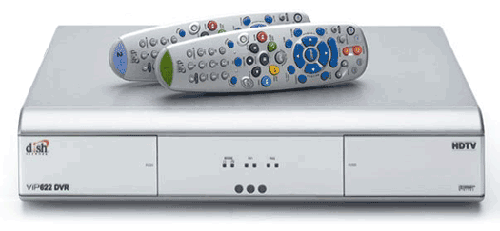
|
|
 |

|


Dick De Jong August 29, 2007 HDTV Solutions I'm a time shifter. Not the millennium hopping, galaxy jumping, Dr. Who type, I'm a more prosaic master of time and space. My warping consists of recording a TV program at 8 and watching it at 10, or if I feel really adventurous, three days later. My time machine for years was the VCR. Actually, I should say for decades since I lived through the first epochal format war, Beta vs. VHS. Last year, I made the transition to a digital video recorder, DVR, and now I feel that I'm truly master of my TV viewing domain. And since I own an HD-DVR, in my couch potato world, I'm a high definition time lord. I see that I'm not alone. According to a study conducted by the Leichtman Research Group, twenty percent of US households now have a DVR, almost three times more than just two years ago.
If you own a DVR, you know its power in time shifting, even live TV. Back in the VCR Dark Ages when I heard video newbies marvel at their life altering new toy called a TiVo, I kept telling myself if all it is doing is recording TV shows on a hard drive, what's the big deal. After I saw the light and made the leap to a DVR, I realized the advantages went beyond simple time shifting and commercial skipping. To begin, my DVR's programming controls have prolonged the health of my scalp and welfare of my graying matter. I used to pull out my hair trying to track down favorite TV shows that seemed to hop around from time slot to time slot. In olden days, I would have to scour TV listings to find when my program was scheduled and then set the VCR and pray that the network didn't decide to change their minds. Now with a DVR, I can tell it to record all the new episodes of Eureka and voilà, it does the searching.
But really what I want to discuss in the context of HDTV Solutions is picture quality, which for me is the fundamental reason to purchase a high definition TV. The path to picture quality begins at the source of the signal. HD-DVRs might not be a perfect, pristine fountainhead of video, but they are a quantum step up in quality from the muddy VHS output. (We'll discuss the pros and cons of satellite, cable and antenna fed sources some other day.) In the video world, there's high def, standard def, and, if we were to label VHS, low def. Granted, S-VHS machines are a bit better than lowly VHS. But even so, if you have an HDTV, you really don't want to be feeding it LD VCR output.
I know some of you have VHS tape archives dating back years and years. I admit that since 1980, I was hording the full series of The Prisoner on VHS until I finally decided to purge it. (I'm glad to see that this surreal series is now available on DVD.) If you are not ready to let loose of your VHS collection, please do me and your HDTV one big favor. Take your VCR out of your system's loop. Let me explain. I was visiting a friend recently and he had a question about his new HDTV. As we were looking at the rat's nest of wires behind his TV, I noticed that the output cable coming from his Comcast HD-DVR was running to his VCR and then to his TV via a Composite cable. Basically, he was taking clean water and running it through the muddy filter of a VCR. To compound the problem, the Composite cable is the worst conduit to send the signal. Since he still wished to playback old VHS tapes and occasionally record onto the VCR, what we did was make sure that we routed a direct connection from the HD-DVR to his HDTV with an HDMI cable. Then for most viewing, he could choose the HDMI input on his HDTV remote. If he wanted to watch a VHS tape, he would switch to the Composite input. If you are ready to simplify your life and improve your viewing pleasure, then I would suggest that you move into the 21st Century and retire that VCR altogether. Make the leap and say, "Adios, old timer. Don't let the screen door hit you on the butt on the way out." |
Bookmark:
![]() del.icio.us
del.icio.us
![]() Reddit
Reddit
![]() Google
Google
| Send this Page | Print this Page | Report Errors |






